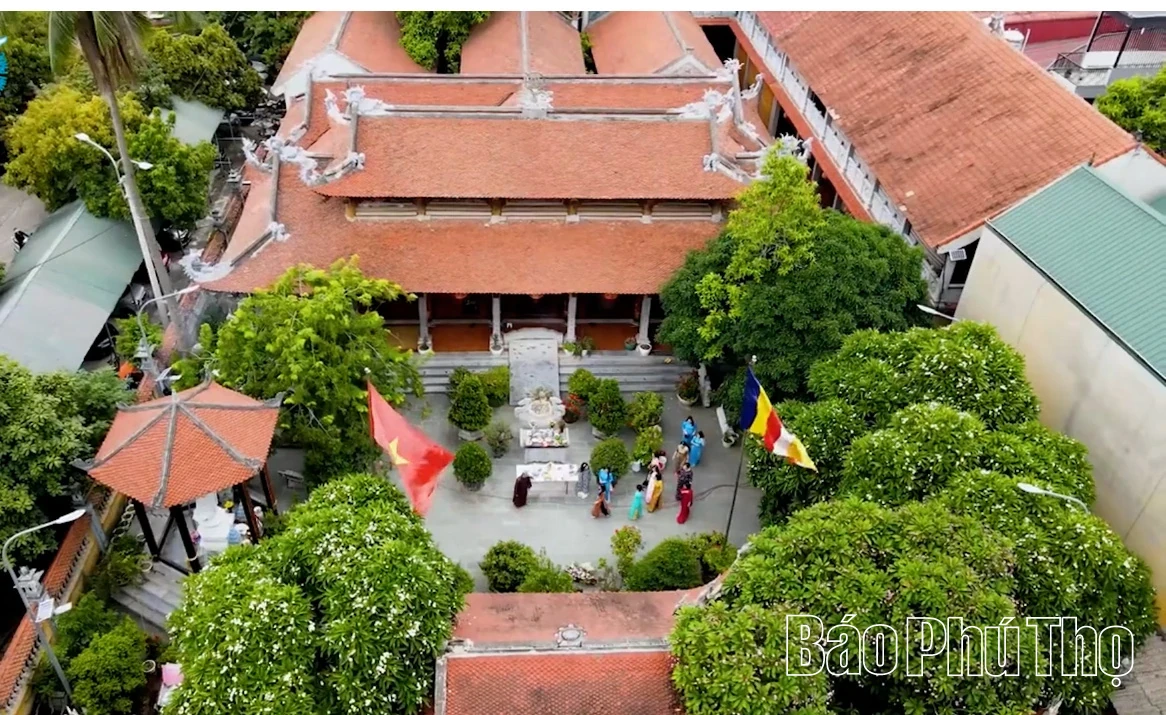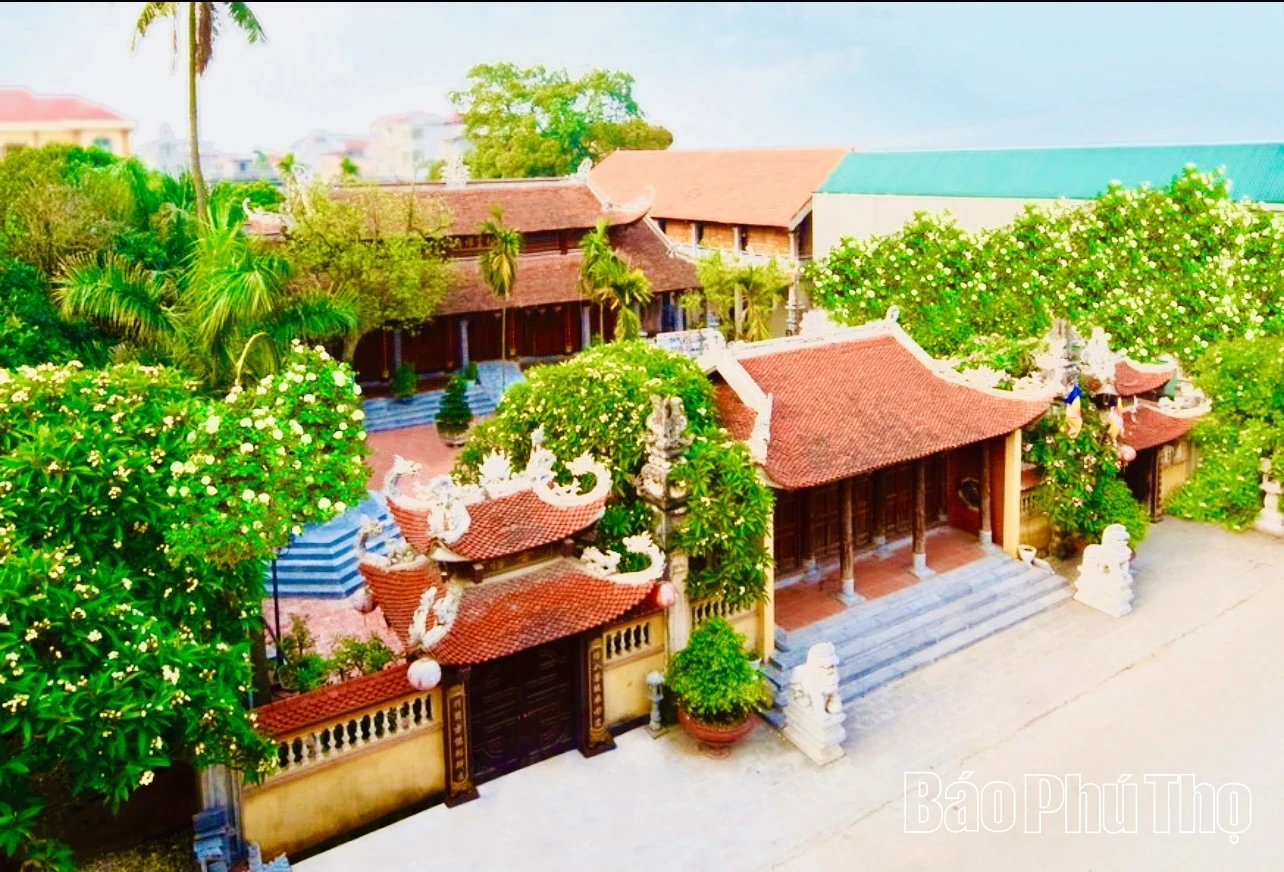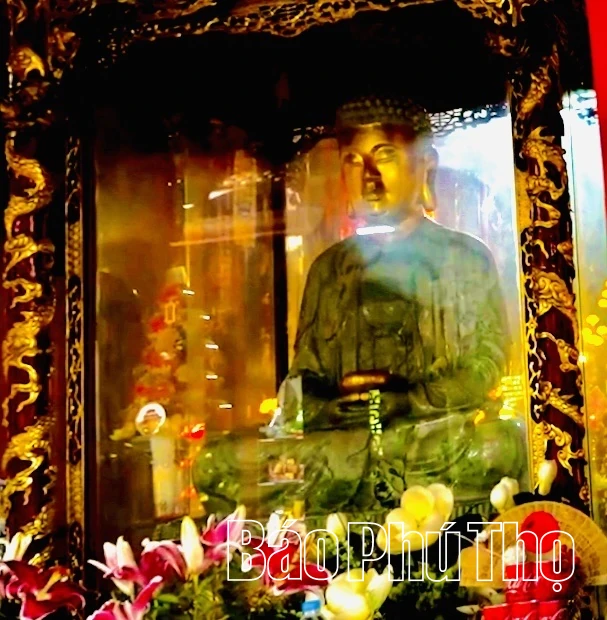{title}
{publish}
{head}
Nestled peacefully in the heart of Tho Tang Commune, Phu Tho Province, Tung Van Pagoda is not only a nationally recognized cultural relic but also a steadfast spiritual sanctuary for the local community. With a history spanning over 300 years, this ancient temple has become a must-visit destination for those who cherish the traditional beauty of Vietnamese Buddhism.

Tung Van Pagoda features seven compartments and two side chambers, supported by hundreds of ironwood and stone columns.

In front of the main hall stands a row of intricately carved stone pillars, adorned with motifs of the Four Sacred Animals (Dragon, Unicorn, Tortoise, Phoenix) and the Four Seasons (Pine, Chrysanthemum, Bamboo, Apricot).

The pagoda was officially recognized as a National Cultural Heritage Site in 1992.
In this tranquil space, we had the opportunity to speak with Venerable Thich Nguyen Cao, the abbot of Tung Van Pagoda since 2003. He shared the proud history of the pagoda: “Tung Van Pagoda was built 340 years ago during the reign of King Le Huy Tong and was designated a national cultural heritage site in 1992. Despite numerous upheavals, the pagoda has undergone several restorations, most notably from 2008 to 2010. Thanks to the collective efforts of local Buddhists and residents, we have been able to preserve its ancient structure to this day.”
What makes Tung Van Pagoda truly captivating is its priceless treasure trove of artifacts, preserved almost intact. Among the most remarkable are ancient statues made of terracotta and wood, dating back nearly 300 years—particularly the statues of Shakyamuni Buddha and the Mother Goddess. These finely crafted sculptures reflect exquisite artistic techniques that modern artisans can admire and learn from. The pagoda also houses many other valuable artifacts, including bronze bells, gongs, and ancient stone steles of significant historical and cultural value.

Nearly 300-year-old terracotta and wooden statues, including the statue of Shakyamuni Buddha and the Mother Goddess
Architecturally, Tung Van Pagoda bears the distinctive features of Northern Delta Buddhist temples, arranged in the traditional “Quoc” (國) layout. The complex includes the three-entrance gate, forecourt, incense hall, upper sanctum, patriarch’s house, corridors, and Mother Goddess shrine. The structure comprises seven compartments and two side chambers, supported by a system of hundreds of ironwood and stone columns. Notably, all the wood used in the pagoda is ironwood—a rare and highly durable timber.
One of the pagoda’s most striking highlights is the statue of the Great Buddha Shakyamuni, placed solemnly in the forecourt. This statue is carved from a single block of jade-green semi-precious stone weighing over 10 tons, standing 3.3 meters tall, 2.1 meters wide, and 1.2 meters thick. The stone was discovered in Yen Bai Province and is one of the largest and rarest jade blocks in Vietnam. On September 16, 2011, the statue was officially recognized by the Vietnam Records Book as “The Largest Green Jade Semi-Precious Stone Buddha Statue in Vietnam.”
Ngoc Thang

baophutho.vn Hoa Binh Lake is among the largest hydropower reservoirs in northern Vietnam, offering significant potential for tourism development and...

baophutho.vn Van Son Commune, known as the “Roof of the Muong Region” — or affectionately called “Cloud Valley” — sits at an altitude of around 1,000 meters...

baophutho.vn Con Pass — a long, winding and perilous mountain pass that links the center of Thu Cuc Commune (Phu Tho Province) with Nga Hai on the far side...

baophutho.vn Nestled peacefully along the Red River, Van Ha carpentry village (formerly in Ly Nhan Commune, Vinh Tuong District, Vinh Phuc Province), now...

baophutho.vn Located in the majestic Northwest region of Phu Tho Province, Tan Mai Commune resembles a picturesque harmony of mountains and rivers. Blessed...

baophutho.vn Dan Tru Hamlet, Tam Hong Commune, Phu Tho Province is renowned for Tro Pagoda – Dai Phuc Tu, one of the region’s long-standing spiritual...

baophutho.vn From a land blessed with poetic landscapes—where the Da River reservoir meets the distinct Muong cultural identity—Thung Nai Commune is...

baophutho.vn Nestled in the lush green valley of Thung Nai Commune, Mo Hamlet appears like a rustic painting, where traditional stilt houses rest beside...

baophutho.vn The vibrant colors of Pa Co Market, located in Pa Co Commune, are woven together from the radiant beauty of brocade fabric, the bright smiles...

baophutho.vn After the administrative merger, Phu Tho Province has entered a new development phase with great potential in culture and tourism. The province...